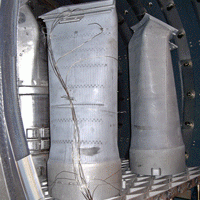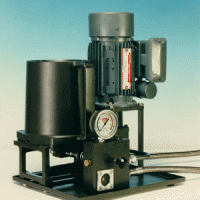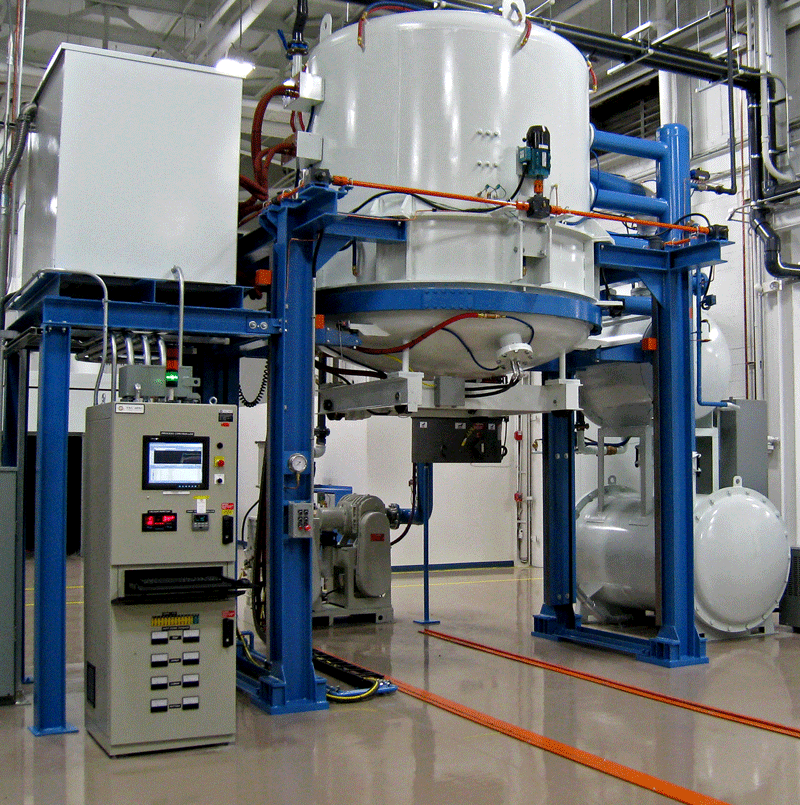In any heat treating cycle, there are two important considerations concerning temperature: the temperature of the furnace hot zone which is generating the heat input, and the temperature of the actual workload. Heating by direct radiation, the main heating mechanism in vacuum, tends to be a slower process than other heating mechanisms such as convection or conduction. As a result, there are times in the heat treating cycle, particularly during heat up, when the load will be at a lower temperature than the furnace hot zone. This is known as temperature lag. Hot zone temperature is controlled and measured through two (or more) thermocouples located close to the heating elements. One thermocouple, the control thermocouple, is connected to the thermal process controller which transmits signals to control the amount of power directed to the furnace elements. BY JEFF PRITCHARD
Archives for January 2015
Oil for Vacuum Pumps
In the world of mechanical oil sealed rotary vacuum pumps there is a need for a variety of oils and fluids to suit the specific type of pump, its duty and the process it is used on. This discussion covers high vacuum pumps only, such as are used in the heat treating and vacuum furnace industry. These same vacuum pumps are used in many other industrial and scientific applications and have to work under many different types of conditions including one that many people expose their pumps too – neglect!.
Rotary vane vacuum pumps are available as direct drive (usually 1800 rpm) and vee belt drive (between 400 and 500 rpm) versions. Rotary piston vacuum pumps are generally vee belt driven and run at about 500 rpm. The work duty of a vacuum pump can vary between intermittent use and running continuously. They can also be used for cyclic duty, to evacuate a loadlock for example, where the pump evacuates a chamber from atmosphere to vacuum every few minutes. The vacuum process can also vary, from clean air pumping to hazardous gas, wet vapor pumping and dirty/dusty atmospheres..
Safety in the Metallography Laboratory
The metallographic laboratory is a relatively safe working environment; however, there are dangers inherent to the job. Included in these dangers is exposure to heat, acids, bases, oxidizers and solvents. Specimen preparation devices, such as drill presses, shears and cutoff saws, also present hazards. In general, these dangers can be minimized if the metallographer consults documents such as ASTM E 2014 (Standard Guide on Metallographic Laboratory Safety) and relevant Material Safety Data Sheets (MSDS) before working with unfamiliar chemicals. Common sense, caution, training in basic laboratory skills, a laboratory safety program, access to safety reference books – these are some of the ingredients of a recipe for laboratory safety.
Safe working habits begin with good housekeeping. A neat, orderly laboratory promotes safe working habits, while a sloppy, messy work area invites disaster. Good working habits include such obvious, commonsense items as washing the hands after handling chemicals or before eating. Simple carelessness can cause accidents. For example, failure to clean glassware after use can cause an accident for the next user. Another common problem is burns due to failure to properly clean acid spills or splatter.
Vacuum Heat Treatment of Fasteners
Fastener applications are demanding. Whether fasteners are being used in the petrochemical industry, in medical or mining applications, for assembly of marine or nuclear components or in the aerospace, automotive or construction world, vacuum processing allows us to repeatedly achieve the highest quality and metallurgy.
Most fastener materials, including stainless steels and superalloy grades, benefit from or actually require vacuum processing for heat treatment instead of being run under protective atmospheres. In general, there are three main sets of applications where vacuum heat treatment is used; processes that can be done in no other way than in a vacuum, processes that can be done better in a vacuum from a metallurgical standpoint and processes that can be done better in a vacuum from an economic standpoint. The absence of surface reactions or the ability to precisely control them is the main difference between vacuum heat treatment and all other forms of heat treatment. Vacuum processing can also remove contaminants from parts, and in some instances, degas or convert oxides found on the material’s surface.




